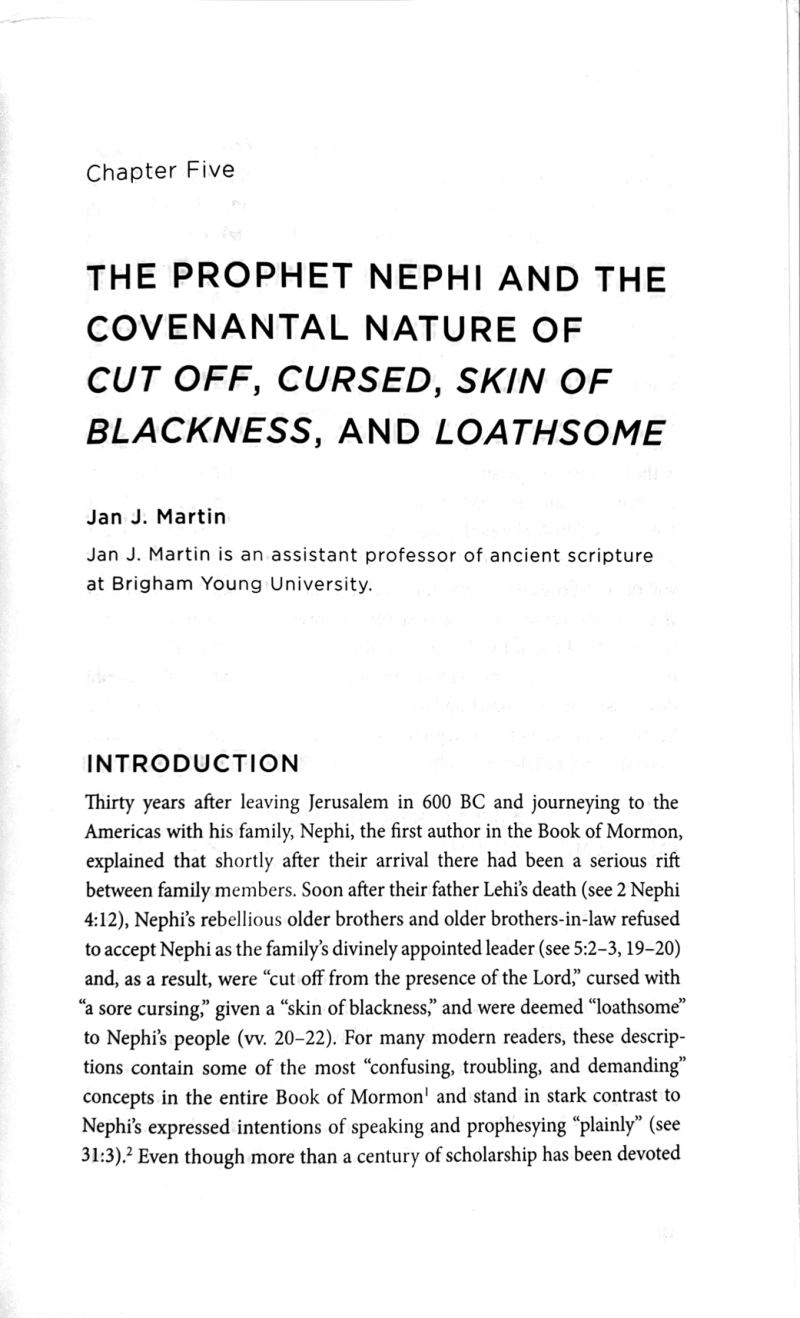Jan J. Martin discusses the "skin of blackness" in the Book of Mormon; argues the language of "cursed" in the text is covenantal, not racial, and that the "skin of blackness" might be tattoos.
- Type
- Academic / Technical Report
- Source
- Jan J. Martin LDS
- Hearsay
- DirectSecondary
- Reference
Jan J. Martin, "The Prophet Nephi and the Covenantal Nature of Cut Off, Cursed, Skin of Blackness, Loathsome," in They Shall Grow Together: The Bible in the Book of Mormon, ed. Charles Swift and Nicholas J. Frederick (Provo, UT: BYU Religious Studies Center; Salt Lake City, UT: Deseret Book, 2022), 107–142
- Scribe/Publisher
- BYU Religious Studies Center
- People
- Jan J. Martin
- Audience
- Reading Public
- Transcription
Nephi's descriptions of his rebellious older brothers as cut off, cursed, bearing a skin of blackness, and loathsome to the Nephites have created much confusion and consternation for students of the Book of Mormon for more than a century. Copious amounts of ink have been employed to argue for racial or metaphorical explanations, none of which have been entirely convincing or satisfying for me. Inspired by the historical perspective that the Book of Mormon and the Bible create when they are used as complementary tools, by the covenantal approach of the Old Testament, and by the central position of covenants in the plan of salvation, I have sought to provide an alternative explanation and have argued that cut off, cursed, skin of blackness, and loathsome are best understood from within the ancient Near Eastern suzerainty covenant that Lehi's family participated in. Following a discussion of the deliberate covenant-centered structure of l and 2 Nephi, I demonstrated that Nephi was familiar with the ancient Near Eastern suzerainty covenants and that he carefully presented a Lehitic suzerainty covenant in the opening chapters of 2 Nephi. I argued that the elements of the treaty assisted Nephi in recovering from his brothers' rejection of his leadership and that they also dictated the way he described Laman, Lemuel, and the sons of Ishmael after they spurned the Lehitic covenant. From Nephi's perspective, cut off signified that the covenant was broken, cursed denoted that the promised consequences for breaking the covenant became operative in his brothers' lives, skin of blackness was a self-inflicted mark (most likely a tattoo) brought about by Laman and Lemuel's divinely acknowledged desires to be distinctly autonomous, and loathsome indicated that the Lamanites would remain outside the covenant until they repented. On this view, Nephi's descriptions are seen to be covenantal in nature, not racial or metaphorical.
- Citations in Mormonr Qnas
The B. H. Roberts Foundation is not owned by, operated by, or affiliated with the Church of Jesus Christ of Latter-day Saints.

